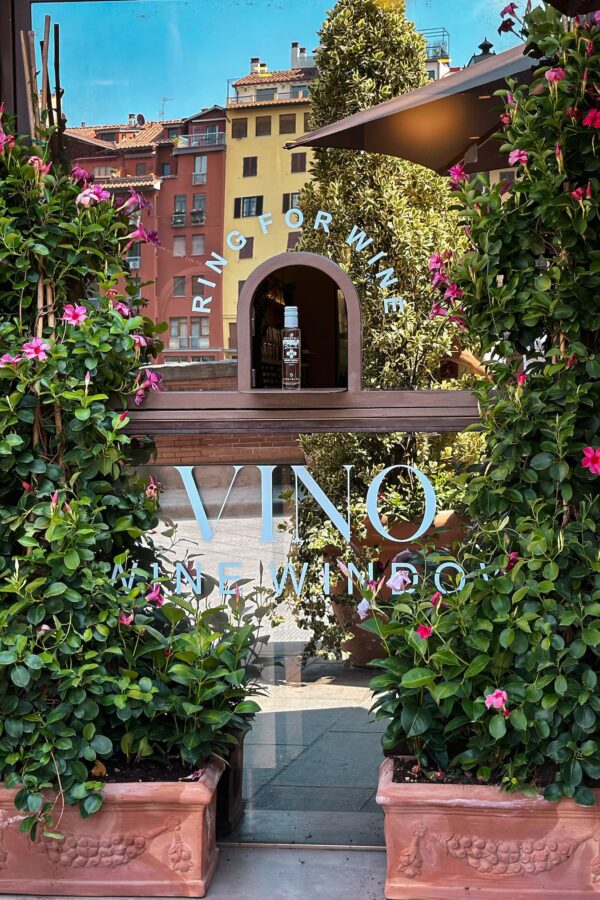Florence’s wine windows represent one of the most characteristic and fascinating elements of the city’s history. These small counters, embedded in the walls of historic buildings, were once an essential means of direct wine sales. However, with the passage of centuries and the advent of modern bars and clubs, the wine window were slowly abandoned, falling almost into oblivion. In recent years, however, a renewed interest has led to their rediscovery and, in some cases, to new reopenings that are bringing this ancient Florentine tradition back to life.
The Disappearance of the Wine Windows
As the city expanded and social and commercial habits changed, the wine windows lost their original function. Starting in the 19th century, urbanisation and the emergence of new forms of commerce, such as bars and wine shops, gradually supplanted the buchette, relegating them to mere historical curiosities.
Changes in the way wine was sold and consumed, together with the introduction of new health and hygiene regulations, contributed to their eventual closure. Many wine window were walled up or abandoned, and only a few remained visible, often without passers-by knowing their true significance.

Rediscovery and Recent Reopening
In recent years, there has been a growing interest in the history and traditions of Florence, leading to the rediscovery of the wine windows. Some historic and new wine bars have decided to restore the use of these ancient openings, transforming them into a unique attraction for tourists and citizens alike.
The reopening of some of the wine windows has been met with great enthusiasm, both for their historical value and for the opportunity to relive a piece of Renaissance life. These small counters offer an authentic experience, allowing visitors to buy wine directly from the street, just as they did centuries ago.
Recent reopenings have seen the involvement of historic establishments that have decided to renew this tradition, creating a link between past and present. Today, walking through the streets of Florence, it is possible to come across some of these re-opened wine windows, where wine is served in glasses or flasks, keeping the memory of an ancient Florentine custom alive.

The Future of the Wine Windows
The return of the buchette del vino is not only a nostalgic phenomenon, but also an opportunity to enhance the city’s cultural heritage. The reopenings are attracting a growing number of tourists interested in discovering this unique aspect of Florentine history. Moreover, the reopened wine windows are becoming reference points for cultural events and wine tastings, helping to promote Tuscan wine culture.
The rediscovery of the wine windows is an example of how local traditions can be reinterpreted and enhanced in the modern context, offering a unique experience that combines history, culture and pleasure.
Conclusion
Florence’s wine windows, once a symbol of a flourishing wine economy and a quality-conscious society, are experiencing a second youth thanks to the interest in historical traditions. Their reopening represents not only a homage to the past, but also a chance to revive an ancient custom that marked the daily life of Florentines for centuries.
Today, more than ever, the wine windows are ready to tell a new story, interweaving the charm of the past with the enthusiasm of the present. If you walk around Florence, look for these little wine holes: they are windows to the past that offer a sip of Florentine history.